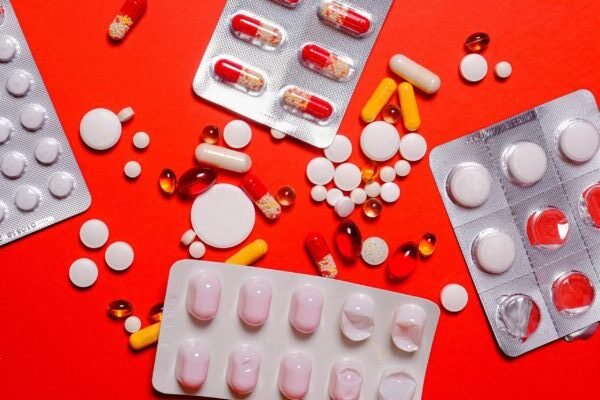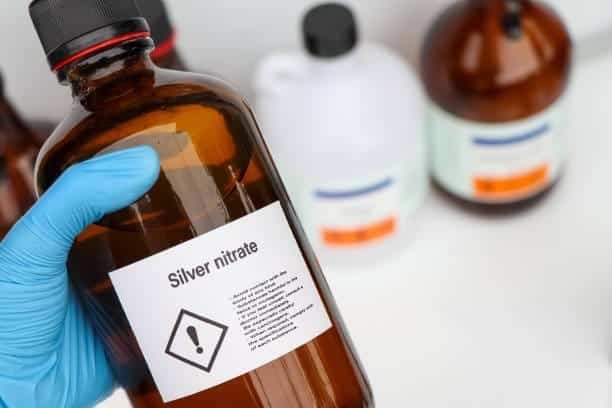The pharmaceutical industry plays a crucial role in ensuring public health by producing safe and effective medications. One of the key aspects that impact the quality and safety of pharmaceutical products is the presence of impurities. Impurities are substances that are unintentionally present in a drug substance or product, and their control is of paramount importance in pharmaceutical manufacturing. This blog will delve into the concept of impurities, their types, and the significance of controlling them in the pharmaceutical industry.
What Are Impurities?
Impurities in the context of pharmaceuticals refer to any unwanted substances present in a drug product. These can be organic or inorganic compounds and may originate from various sources, including raw materials, reagents, intermediates, or the manufacturing process itself. Impurities can be classified into different categories based on their origin and nature.
- Organic Impurities:
- Process-Related Impurities: These are formed during the manufacturing process and may include reaction intermediates, degradation products, or by-products.
- Chemical Reagents and Catalysts: Residual amounts of chemicals used in the synthesis of the drug can be considered impurities.
- Degradation Products: These are substances formed as a result of the degradation of the drug substance or product over time or under specific conditions.
- Inorganic Impurities:
- Metallic Impurities: These can arise from the use of metal catalysts or contamination from equipment used in manufacturing.
- Residual Solvents: Some solvents used in the synthesis process may remain in the final product as impurities.
- Residual Solvents:
- These are volatile organic compounds used during the manufacturing process that may not be completely removed.
Importance of Impurity Control in the Pharmaceutical Industry
- Safety of the Patients:
- The presence of impurities in pharmaceutical products can pose serious health risks to patients. Some impurities may be toxic or cause adverse reactions, compromising the safety of the medication.
- Efficacy of the Drug:
- Impurities can affect the potency and efficacy of the drug. For instance, degradation products may lead to a decrease in the therapeutic activity of the product.
- Regulatory Compliance:
- Regulatory agencies, such as the U.S. Food and Drug Administration (FDA) and the European Medicines Agency (EMA), have strict guidelines regarding the control of impurities. Non-compliance can result in regulatory actions, including product recalls and fines.
- Product Stability:
- Impurities can contribute to the instability of pharmaceutical products, leading to changes in color, taste, or smell. This can impact the shelf life and overall quality of the medication.
- Analytical Challenges:
- Identifying and quantifying impurities present analytical challenges. Advanced analytical techniques, such as high-performance liquid chromatography (HPLC) and mass spectrometry, are employed for accurate impurity profiling.
- Globalization of the Pharmaceutical Supply Chain:
- In an era of globalized pharmaceutical manufacturing, the control of impurities becomes crucial to ensure consistency and quality across different manufacturing sites.
Control Measures for Impurities
- Good Manufacturing Practices (GMP):
- Adhering to GMP standards is fundamental in preventing the introduction of impurities during the manufacturing process.
- Quality by Design (QbD):
- Implementing QbD principles allows for the identification and control of potential impurities throughout the product development lifecycle.
- Analytical Techniques:
- Utilizing advanced analytical techniques helps in the detection and quantification of impurities. Regular testing and monitoring are essential for ensuring product quality.
- Risk Assessment:
- Conducting risk assessments at various stages of drug development and manufacturing helps identify potential impurities and implement strategies to mitigate risks.
- Use of High-Quality Raw Materials:
- Selecting high-quality raw materials with minimal impurities is a proactive measure to reduce the likelihood of impurity presence in the final product.
- Optimization of Manufacturing Processes:
- Optimizing manufacturing processes to minimize the generation of impurities is a crucial aspect of impurity control.
Challenges in Impurity Control:
- Identification and Characterization:
- Identifying and characterizing impurities can be challenging due to their low concentrations and the complex nature of pharmaceutical formulations. Advances in analytical technologies, such as NMR (nuclear magnetic resonance) spectroscopy, contribute to more accurate identification.
- Limit Setting and Regulatory Standards:
- Establishing acceptable limits for impurities involves a delicate balance between ensuring patient safety and allowing for practical manufacturing processes. Regulatory agencies provide guidance, and pharmaceutical companies must adhere to these standards, contributing to the complexity of impurity control.
- Stability Studies:
- Conducting stability studies is crucial to understanding how impurities may form or change over time. This requires long-term monitoring under various storage conditions, adding time and resource challenges to the manufacturing process.
Advancements in Analytical Techniques:
- High-Resolution Mass Spectrometry (HRMS):
- HRMS has revolutionized impurity analysis by providing accurate mass measurements. This helps in the identification of unknown impurities and allows for a more comprehensive understanding of the impurity profile.
- Hyphenated Techniques:
- Techniques such as LC-MS (liquid chromatography-mass spectrometry) and GC-MS (gas chromatography-mass spectrometry) have become indispensable in impurity analysis. These hyphenated techniques offer high sensitivity and specificity in detecting and quantifying impurities.
- Automation and Robotics:
- Automation in analytical laboratories, including robotic sample preparation and high-throughput screening, accelerates the analysis of large sample sets, facilitating faster decision-making in impurity control.
International Collaboration in Impurity Control:
- Harmonization of Standards:
- Collaboration between regulatory authorities from different countries has led to the harmonization of standards and guidelines for impurity control. This helps ensure consistency in regulatory expectations globally.
- Information Sharing:
- Pharmaceutical companies are increasingly collaborating to share information on impurity profiles and control strategies. This collaborative approach fosters a collective understanding of challenges and solutions, benefiting the entire industry.
- Supply Chain Integrity:
- Ensuring the integrity of the pharmaceutical supply chain is a global effort. Collaboration between manufacturers, distributors, and regulatory bodies helps prevent the introduction of impurities at any stage of the supply chain.
Emerging Trends in Impurity Control:
- Continuous Manufacturing:
- The adoption of continuous manufacturing processes is gaining momentum in the pharmaceutical industry. This shift offers better control over reaction conditions, reducing the likelihood of impurity formation.
- Data Science and Artificial Intelligence:
- The integration of data science and artificial intelligence in impurity control enhances the analysis of large datasets, identifies patterns, and predicts potential impurities. This aids in proactive measures to prevent impurity issues.
- Green Chemistry:
- Embracing principles of green chemistry aims to minimize the use of hazardous reagents and reduce the environmental impact of pharmaceutical manufacturing. This approach inherently contributes to the control of impurities.
Impact of Impurities on Different Drug Classes:
- Small Molecule Drugs:
- Impurities in small molecule drugs can affect the pharmacokinetics and pharmacodynamics, leading to variations in bioavailability and therapeutic efficacy. Control measures for small molecules often involve precise analytical methods and rigorous manufacturing processes.
- Biologics:
- Biologics, including monoclonal antibodies and therapeutic proteins, present unique challenges in impurity control. Host cell proteins, DNA, and other process-related impurities can impact the safety and efficacy of biologics. Advanced analytical techniques, such as mass spectrometry and capillary electrophoresis, are crucial in their control.
- Generic Drugs:
- Generic drugs, which are intended to be bioequivalent to their reference products, face stringent requirements for impurity control. Generic manufacturers must demonstrate comparability in impurity profiles, ensuring the same level of safety and efficacy as the reference product.
Role of Quality Risk Management (QRM) in Impurity Control:
- Identification of Critical Process Parameters (CPP):
- QRM involves identifying and controlling critical process parameters that can influence impurity formation. Understanding the impact of various factors during manufacturing enables proactive risk mitigation.
- Risk Assessment Tools:
- Utilizing risk assessment tools helps prioritize and manage potential risks associated with impurities. FMEA (Failure Mode and Effects Analysis) and FMECA (Failure Mode, Effects, and Criticality Analysis) are commonly used tools in pharmaceutical risk management.
- Continual Improvement:
- QRM fosters a culture of continual improvement in impurity control. Regular risk reviews and updates to control strategies ensure that the manufacturing process remains robust and adaptive to changes.
Ongoing Research in Impurity Control:
- Genotoxic Impurities:
- Research continues to focus on understanding and controlling genotoxic impurities, which have the potential to damage DNA and pose serious health risks. Advanced methods for the assessment and control of genotoxic impurities are continually evolving.
- Nanomedicines:
- As nanomedicines gain prominence, research is dedicated to understanding and controlling impurities associated with nanoparticle formulations. Ensuring the safety of nanomedicines requires comprehensive impurity profiling.
- Extractables and Leachables:
- The pharmaceutical industry is increasingly focusing on the identification and control of extractables and leachables, especially in the context of container closure systems. This is vital for preventing contamination of drug products during storage.
Global Regulatory Trends in Impurity Control:
- ICH Guidelines:
- The International Council for Harmonisation of Technical Requirements for Pharmaceuticals for Human Use (ICH) plays a crucial role in establishing global guidelines for impurity control. Continuous updates and revisions ensure alignment across regulatory authorities.
- Quality by Design (QbD):
- The integration of Quality by Design principles in impurity control is a global trend. Regulatory agencies emphasize the importance of a systematic approach to product development that includes a thorough understanding of potential impurities.
- Accelerated Approvals:
- Some regulatory agencies may grant accelerated approvals for drugs addressing unmet medical needs. However, impurity control remains a critical factor even in expedited approval processes, ensuring patient safety.
Challenges and Future Directions:
- Emerging Contaminants:
- The identification and control of emerging contaminants, such as those from environmental sources, present new challenges. Pharmaceutical manufacturers must adapt their impurity control strategies to address evolving concerns.
- Personalized Medicine:
- With the rise of personalized medicine, where treatments are tailored to individual patients, the industry faces challenges in ensuring the safety and quality of highly individualized formulations. Impurity control strategies need to accommodate the variability associated with personalized therapies.
- Digitalization in Manufacturing:
- The digitalization of pharmaceutical manufacturing, often referred to as Pharma 4.0, is influencing impurity control. Integration of data from various stages of the manufacturing process allows for real-time monitoring and decision-making.
Conclusion
In conclusion, impurities in the pharmaceutical industry are undesired substances that can have serious implications for patient safety and product quality. The control of impurities is a multifaceted process that involves adherence to strict regulatory standards, implementation of quality control measures, and the use of advanced analytical techniques. As the pharmaceutical industry continues to evolve, maintaining a robust impurity control strategy is indispensable to ensure the development and production of safe and effective medications that meet the highest quality standards.


